The Ultimate Guide to Luxury Watches: Style, Investment, and Exclusivity

Introduction to Luxury Watches
Why Luxury Watches Are More Than Just Accessories
Luxury watches transcend being mere time-telling devices; they embody a blend of exceptional craftsmanship, prestige, and investment potential. Each luxury timepiece is meticulously handcrafted, often by highly skilled artisans, making them unique works of art. They incorporate the finest materials—such as precious metals, diamonds, and sapphires—ensuring both durability and elegance. The detailed internal mechanisms, such as Swiss movements, showcase precision and innovation in horology that mass-produced watches lack.
For many, wearing a luxury watch signifies prestige and a statement of style, often aligning with social status and personal achievement. The most iconic luxury brands—Rolex, Patek Philippe, and Audemars Piguet, among others—are known not only for their timeless designs but also for their ability to hold or even increase in value over time, making them a solid investment. Limited-edition pieces and vintage watches, in particular, are sought after by collectors and often appreciate in value due to rarity and the heritage of the brand.
A Brief History of High-End Timepieces
The history of luxury watches dates back to the 16th century when the first portable watches were created in Europe. Over time, they evolved from functional timekeeping tools to luxury items that represented craftsmanship and innovation. In the 18th century, Swiss watchmakers perfected the art of precision timekeeping, with brands like Patek Philippe and Vacheron Constantin pushing the boundaries of horology.
The 20th century saw the rise of iconic brands like Rolex, which revolutionized the market with the introduction of waterproof cases and automatic movements. Today, luxury watches combine traditional craftsmanship with modern technology, featuring complications like tourbillons, perpetual calendars, and moon phases. They continue to symbolize elegance, success, and innovation in a fast-paced world, where owning a finely crafted timepiece is a mark of distinction.
Top Luxury Watch Brands
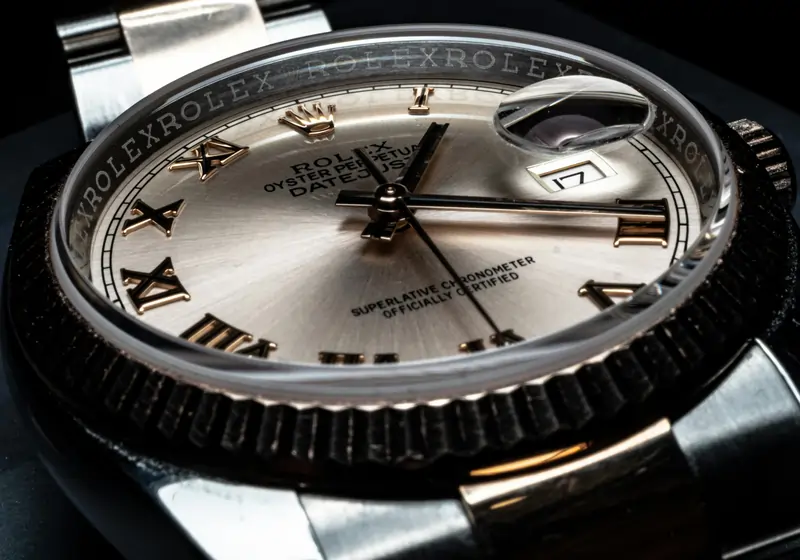
Rolex
Rolex is arguably the most recognized luxury watch brand globally, renowned for its heritage, precision, and timeless designs. Since its founding in 1905, Rolex has consistently been a symbol of success and prestige. It was the first brand to introduce innovations such as the waterproof watch case (Oyster case) and the automatic date function. Rolex watches, like the Submariner, Daytona, and Datejust, are not only iconic for their durability and performance but also for their ability to maintain or increase in value, making them a favorite among collectors. Each piece is made from the finest materials, often incorporating 18k gold, platinum, and diamonds, ensuring both luxury and functionality.
Patek Philippe
Patek Philippe is synonymous with exclusivity and craftsmanship. Founded in 1839, the brand is known for its intricate, hand-finished movements and timeless designs, which often require years to complete. Patek Philippe watches are highly coveted due to their scarcity, with many models produced in limited quantities or as one-of-a-kind timepieces. Collectors consider owning a Patek Philippe watch as the pinnacle of horological achievement, and they are passed down through generations. Iconic models such as the Calatrava, Nautilus, and Grand Complications showcase both mechanical brilliance and elegant design, contributing to their appeal as investment pieces.
Audemars Piguet
Founded in 1875, Audemars Piguet is revered for its avant-garde designs and pioneering spirit. The brand revolutionized the luxury sports watch market with the introduction of the Royal Oak in 1972, a model that featured a bold design with a stainless steel case and octagonal bezel. Audemars Piguet continues to innovate with complex complications, including perpetual calendars, minute repeaters, and tourbillons. Its watches combine technical mastery with artistic flair, offering collectors something distinctively different in the luxury watch space.
Vacheron Constantin
Vacheron Constantin, established in 1755, is one of the oldest watchmakers in the world, with a history of producing timepieces of exceptional craftsmanship and elegance. The brand’s commitment to precision, tradition, and artistry is reflected in its finely detailed watches, which often feature hand-engraving and intricate complications. Vacheron Constantin is particularly known for its ability to blend classical design with modern technical innovation. Its Patrimony and Overseas collections are beloved by enthusiasts for their sophistication and versatility.
The Investment Potential of Luxury Watches

Why Watches Make Smart Investments
Luxury watches have proven to be reliable investment assets, especially in a world where tangible luxury goods continue to appreciate. While watches are traditionally seen as accessories or symbols of status, certain timepieces have become highly sought-after by collectors and investors alike due to their ability to retain or even increase in value. Many of these watches appreciate over time, making them smart investments. For example, iconic brands like Rolex, Patek Philippe, and Audemars Piguet often see price increases for their limited-edition or highly coveted models. The combination of brand reputation, craftsmanship, and rarity enhances their investment potential, as they become valuable assets that collectors compete for in the market.
Factors that Impact a Watch’s Value
Several factors contribute to the investment value of a luxury watch:
Limited Editions: Watches produced in limited numbers often hold greater appeal due to their rarity, making them more likely to appreciate in value. Brands often release exclusive pieces with limited availability, attracting the attention of collectors.
Craftsmanship: The level of detail and expertise put into creating a luxury timepiece plays a significant role in its value. Intricate complications such as tourbillons, perpetual calendars, and minute repeaters elevate the status and investment potential of a watch.
Brand Legacy: Established brands with a long-standing reputation for quality and exclusivity tend to have more stable and appreciated market values. Rolex, Patek Philippe, and Vacheron Constantin are prime examples of brands that command high resale prices due to their legacies.
Market Demand: Watches that are difficult to acquire, such as those with long waitlists or discontinued models, often see their value surge in the resale market. Certain models become cultural icons, and their demand significantly outweighs their supply, driving prices up.
Top Investment-Worthy Models
Rolex Daytona: The Rolex Daytona is widely considered one of the best investment watches due to its enduring popularity and limited supply. Vintage Daytonas, especially models like the Paul Newman Daytona, have seen extraordinary price appreciation.
Patek Philippe Nautilus 5711: Patek Philippe’s Nautilus series, particularly the 5711 model, is known for its exclusivity and elegant design. The discontinuation of this model has further enhanced its desirability, leading to significant price increases in the secondary market.
Audemars Piguet Royal Oak: The Royal Oak has grown into a cultural and design icon, particularly the Royal Oak Offshore models, known for their innovative and bold designs. With their unique steel construction and octagonal bezel, these watches remain highly desirable and investment-worthy.
Vacheron Constantin Patrimony: With timeless elegance and technical precision, the Patrimony collection appeals to collectors seeking classic aesthetics combined with high-end watchmaking expertise. The value of these models has shown consistent growth in recent years.
Exclusive Materials and Craftsmanship
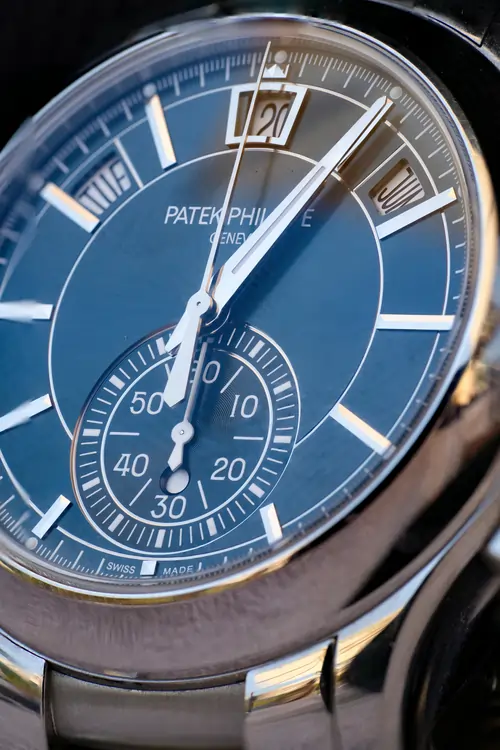
The Use of Precious Metals and Gemstones
Luxury watches are often crafted using the finest materials, such as gold, platinum, and diamonds, which contribute not only to the timepiece’s aesthetic but also to its value. The incorporation of 18k gold, rose gold, or platinum in the casing, bracelet, and dial enhances the luxurious appeal of these watches. Many high-end brands, such as Rolex and Patek Philippe, use diamonds, emeralds, rubies, and other precious stones in their designs, making each piece a work of art as well as a functional accessory. The value of these watches is significantly impacted by the quality and quantity of the materials used, often turning them into investment pieces due to their intrinsic value.
Handcrafted Movements: The Heart of a Luxury Watch
One of the most distinctive features of luxury watches is the handcrafted movements that power them. While many mainstream watches use mass-produced, machine-made movements, high-end timepieces are built by expert watchmakers, who spend countless hours assembling and fine-tuning the mechanisms. This includes the assembly of intricate components such as tourbillons, perpetual calendars, and chronographs. Brands like Vacheron Constantin and Audemars Piguet are renowned for their horological craftsmanship, where movements are meticulously created by hand, ensuring superior accuracy and durability. The artistry behind these movements is a major reason why luxury watches are not just accessories but also revered as mechanical masterpieces.
Limited Editions and Customization
Another defining feature of luxury watches is the exclusivity offered through limited editions and customization options. Many prestigious brands release a select number of limited-run pieces, which are often highly sought after by collectors. These watches typically come with unique design elements, precious materials, and intricate craftsmanship that set them apart. The Audemars Piguet Royal Oak and Patek Philippe Grand Complications are prime examples of watches that often have limited production, driving their value on the secondary market.
Customization further adds to the appeal, where clients can personalize aspects of the watch—such as the dial, bracelet, or even engravings—to create a one-of-a-kind piece. This level of personalization ensures that luxury watches are not only status symbols but also deeply personal, reflecting the wearer’s style and preferences.
Caring for Your Luxury Watch
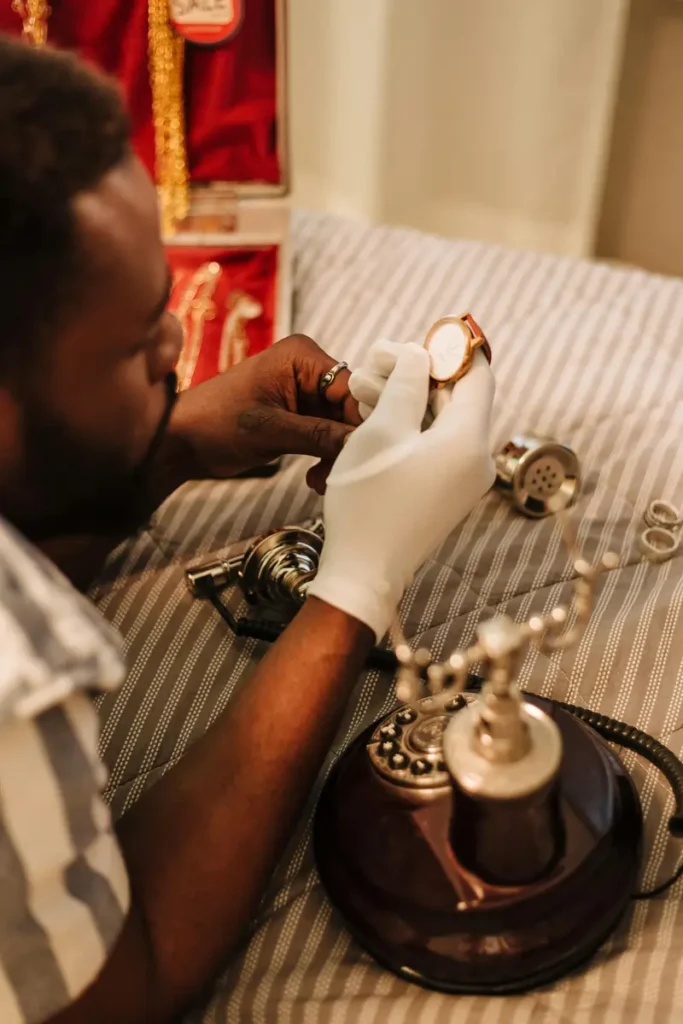
Maintenance and Servicing
Regular maintenance is crucial for keeping your luxury watch in optimal condition, both functionally and aesthetically. High-end timepieces often require servicing every 3 to 5 years, depending on the manufacturer’s guidelines and the frequency of use. During servicing, a professional watchmaker will disassemble, clean, and lubricate the movement, check for worn-out components, and reassemble the watch to ensure it functions with precision. This is especially important for complicated watches with mechanical movements, as neglecting regular service could lead to malfunctions or loss of time accuracy. Keeping a consistent servicing schedule helps maintain the watch’s performance and preserves its value over time, ensuring it stays in pristine condition for generations.
Storage Solutions: Protecting Your Investment
Proper storage of luxury watches is essential to prevent damage and maintain their value. Many luxury watches come with a watch box, but for long-term storage, additional measures may be necessary. Watch winders are a popular choice for automatic watches as they keep the movement running when the watch is not being worn, preventing the oils from coagulating inside the movement. For mechanical or quartz watches, it’s recommended to store them in a cool, dry place, preferably in a safe or secure watch box with soft padding to avoid scratches. UV light, humidity, and temperature fluctuations can harm both the materials and movement of your timepiece, so avoiding direct sunlight or damp conditions is essential.
Insurance and Security for High-Value Timepieces
Luxury watches are significant investments, and it’s important to protect them from potential risks such as theft, damage, or loss. One of the best ways to safeguard your collection is through insurance specifically tailored for high-value items. Many insurance providers offer policies that cover your watches against theft, damage, or loss, whether you’re at home or traveling. Make sure to document your collection with receipts, certificates of authenticity, and high-quality photos to ensure that the insurance process is smooth if needed. Additionally, storing your watches in a secure location, such as a safe, is another essential precaution. High-end safes with biometric security or time locks provide extra layers of protection for your valuable timepieces.
Ensuring the proper care and protection of your luxury watches can help maintain their value and allow you to enjoy them for years to come.
How to Choose the Perfect Watch for Your Lifestyle
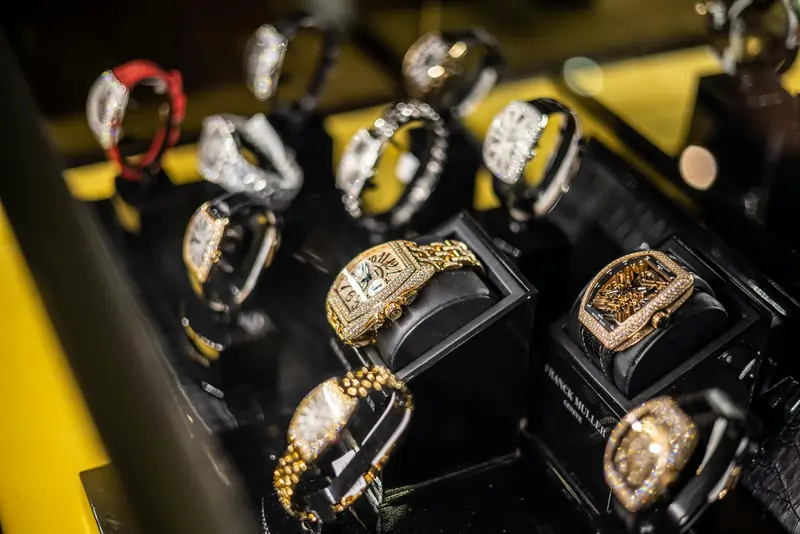
Classic vs. Sporty: Defining Your Style
When selecting the perfect luxury watch, it’s important to consider how it complements your personal style. Classic watches typically feature minimalist designs with leather or metal bracelets and are ideal for formal settings, such as business meetings, galas, or weddings. Brands like Patek Philippe and Jaeger-LeCoultre excel in producing classic timepieces that exude sophistication and timeless appeal.
On the other hand, sporty watches offer more functionality, often featuring water resistance, chronographs, or robust designs. These timepieces are perfect for active individuals or those who enjoy outdoor adventures, with brands like Rolex (the Submariner) and Audemars Piguet (Royal Oak Offshore) standing out in this category. For those looking for something in between, versatile everyday watches blend elegance and practicality, making them suitable for both formal and casual occasions.
Matching Watches with Occasions
Pairing your luxury watch with the right occasion can elevate both your look and your confidence. A dress watch with a slim profile, such as the Cartier Tank or Vacheron Constantin Patrimony, is perfect for black-tie events or formal dinners. For more casual outings or business casual settings, a steel sports watch like the Omega Seamaster or Tag Heuer Carrera can provide the perfect balance between refinement and durability.
Meanwhile, if you’re engaging in outdoor activities or sports, a sturdy dive watch or a chronograph with a rugged design is recommended. Watches like the Rolex Submariner or Breitling Navitimer are excellent choices that combine precision with resilience.
Personalized Recommendations
Choosing the right timepiece also depends on your lifestyle, career, and personal preferences. For a corporate professional, a subtle, understated watch with an elegant face and simple dial may be the best choice, as it reflects professionalism and taste. Conversely, someone with an active lifestyle or love for adventure might gravitate toward sportier models with additional features like compasses or chronographs.
Additionally, some luxury watch brands offer customization services, allowing you to personalize your watch with engravings, unique dials, or exclusive materials that reflect your individuality. A personalized watch not only becomes a reflection of your style but also carries sentimental value.
By evaluating your personal style, the occasions you’ll wear the watch for, and your lifestyle needs, you can confidently choose a timepiece that will not only serve as a functional accessory but as a statement of luxury and personal identity.
The Future of Luxury Watches
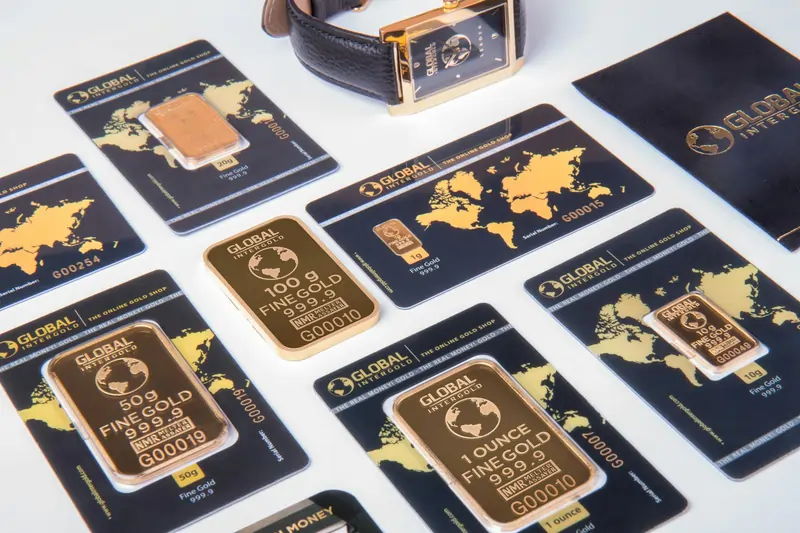
Smartwatches vs. Traditional Timepieces
As smartwatches continue to evolve, their impact on the luxury watch industry is undeniable. While smartwatches offer advanced technology such as health tracking, connectivity, and customizable features, traditional luxury watches maintain their prestige through craftsmanship, heritage, and timeless designs. Luxury brands like Tag Heuer and Louis Vuitton have ventured into the smartwatch market, blending technology with elegance to create hybrid timepieces that appeal to tech-savvy consumers.
However, traditional luxury watches, such as Rolex and Patek Philippe, continue to hold their value, particularly among collectors who view them as long-term investments. These watches are often regarded as symbols of status, artistry, and durability, qualities that smartwatches cannot fully replicate. The question remains whether the technological advancements in smartwatches will disrupt traditional luxury timepieces or coexist as two distinct categories, catering to different consumer preferences.
Sustainability in Watchmaking
With increasing global emphasis on sustainability, luxury watchmakers are also adapting to more eco-friendly practices. Brands such as Panerai and Chopard are leading the charge by incorporating recycled materials, fair-mined gold, and ethical sourcing into their production processes. The push for environmentally-conscious watchmaking extends to packaging, where some brands have minimized the use of plastics and non-biodegradable materials.
Luxury watchmakers are also becoming more transparent about their supply chains and the environmental impact of their production, aligning with a growing demand for sustainable luxury. As sustainability becomes more central to the identity of many luxury brands, we can expect to see more innovations focused on both reducing carbon footprints and promoting ethical practices in the industry.
Emerging Trends in Watch Design
The future of luxury watches is also shaped by emerging trends in materials and design. One notable trend is the use of unconventional materials, such as ceramic, titanium, and carbon composites, which provide a contemporary, lightweight feel while maintaining durability. These materials offer an alternative to traditional metals like gold and platinum, appealing to younger consumers seeking modern aesthetics.
In terms of design, watches with skeletonized dials, vibrant colors, and intricate complications are gaining popularity. Brands are also experimenting with limited-edition releases and collaborative efforts with designers, artists, and other luxury brands to create unique, collectible pieces. As the market continues to evolve, we can expect watchmakers to push the boundaries of design while balancing tradition and innovation to attract new generations of luxury watch enthusiasts.
Frequently Asked Questions (FAQs) About Luxury Watches
What should I look for in an investment watch?
When investing in a luxury watch, focus on factors that will contribute to its value appreciation over time. These include:
- Brand Heritage: Opt for reputable brands with a strong legacy, such as Rolex, Patek Philippe, or Audemars Piguet.
- Limited Editions: Watches released in limited quantities are more likely to increase in value due to their rarity.
- Condition: Always prioritize watches in pristine or excellent condition, as even minor damage can impact resale value.
- Provenance: Watches with documented ownership history or a connection to notable events or people often appreciate faster.
- Materials: Watches made from precious metals or featuring gemstones can maintain or increase in value more than standard materials.
How often should I service my luxury watch?
Luxury watches typically need servicing every 3 to 5 years, depending on the brand and the specific model. Regular servicing ensures that the internal mechanisms are functioning optimally and helps maintain the watch’s value. Watches exposed to water or extreme conditions might require more frequent servicing, while those that are worn sparingly may need less attention. It’s essential to have your watch serviced by a certified professional to avoid voiding the warranty or causing damage.
What are the best storage solutions for high-end watches?
To protect your luxury watches and maintain their value, consider the following storage solutions:
- Watch Winders: For automatic watches, a watch winder keeps them running when not worn, preventing the oils inside from coagulating.
- Temperature-Controlled Safes: Store your watches in safes designed to maintain stable temperature and humidity, protecting them from environmental damage.
- Soft Pouches or Watch Rolls: If traveling, soft cases with padding offer a portable solution while protecting your watches from scratches and impacts.
- Watch Boxes: High-quality watch boxes with separate compartments can keep multiple watches organized and secure, reducing the risk of physical damage.
